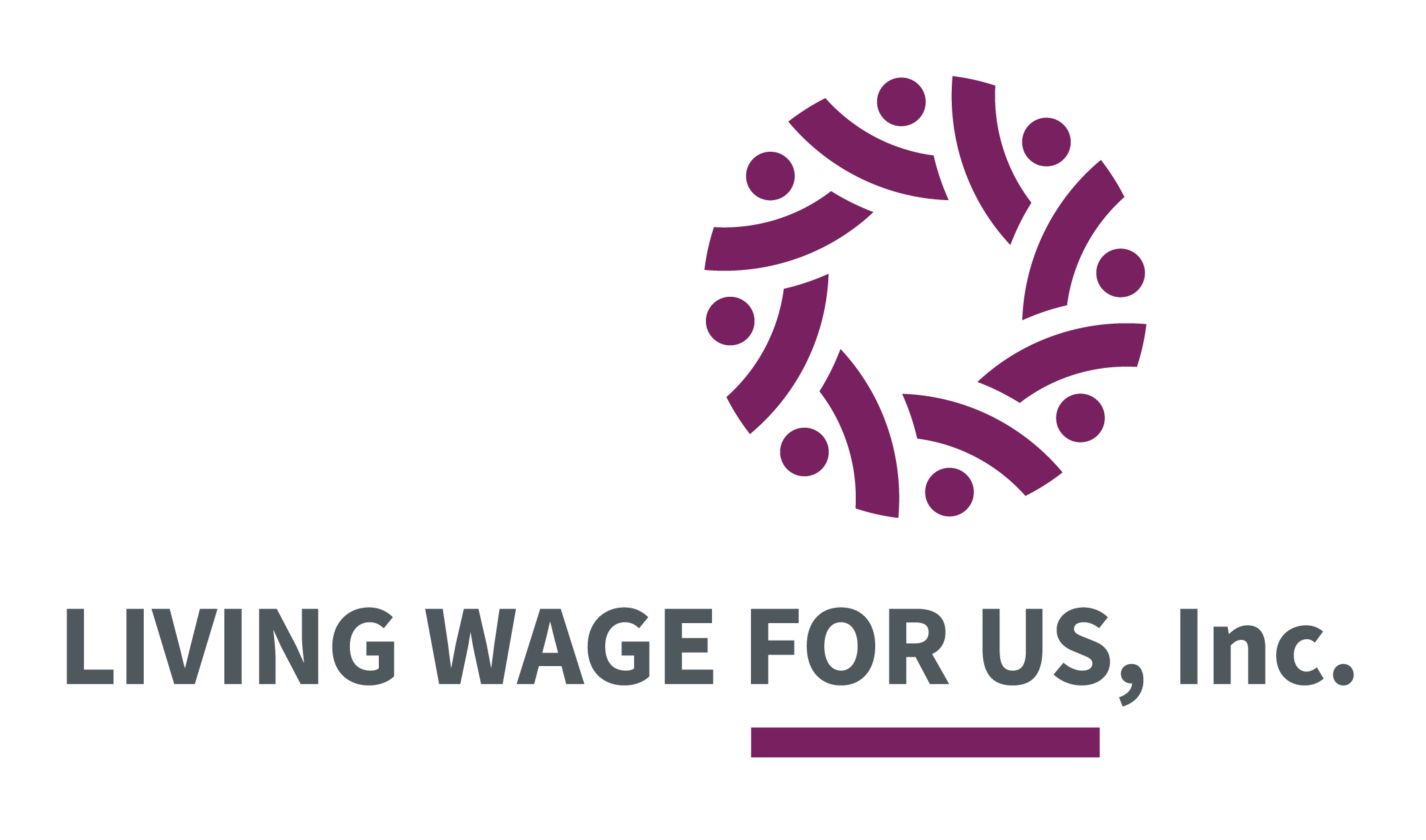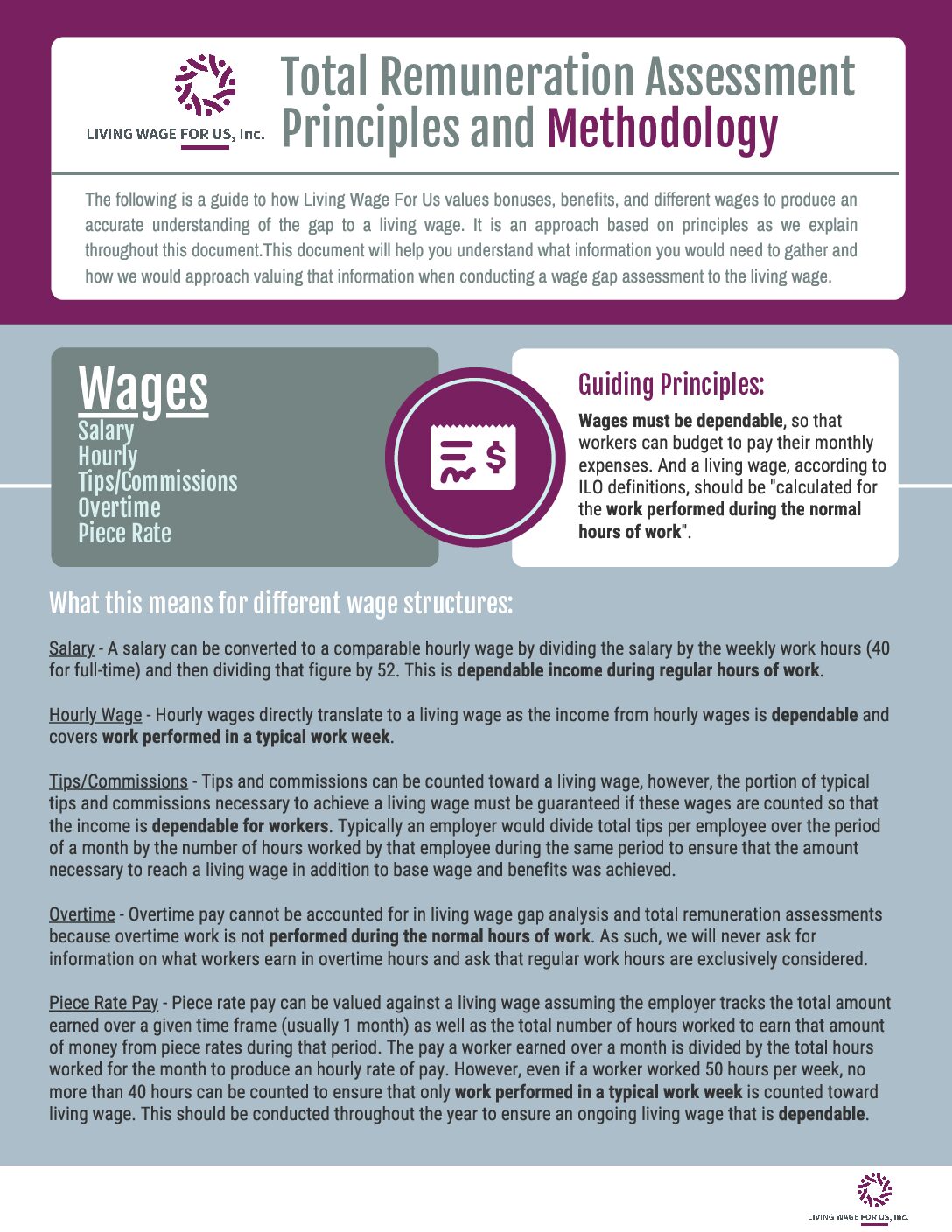Methodology for Estimating Living Wage
In creating a methodology for estimating living wages across the U.S., we strove to align as closely as possible with global best practice. In our original iteration, the principles described in the “Anker Methodology” developed by Richard Anker and Martha Anker.provided significant guidance on principles with which we needed to align. For US made adjustments for the U.S. context and does not claim to be using the Anker Methodology itself. Rather, we have created a living wage estimation methodology that will allow employers working with Anker Methodology estimates globally to apply the same general understanding of a living wage to their workers in the U.S. We would like to fully acknowledge the groundbreaking work of Richard Anker and Martha Anker, as well as the Global Living Wage Coalition in advancing an understanding of living wage. You may access the full Anker Methodology in the published manual Living Wages Around the World: Manual for Measurement.
We are now working to ensure further global alignment on living wage estimates as part of the global WageMap Initiative. In this group we are leading the technical committee to develop a broad stakeholder informed standard designed to align with ILO principles on estimating living wages. This is an ongoing process and Living Wage for Us will always strive to update our methodology to align with best practice should this process result in additional insight.
We would like to acknowledge and thank the Economic Policy Institute (EPI) for the work they do in creating our living wage estimates. When we originally developed our methodology, we searched for an independent research partner that was already building data on the costs of living we needed included in the living wage estimate methodology. EPI had a pre-existing methodology that met all of our needs for the vast majority of costs included in our living wage estimates. As such, we have been utilizing EPI’s data and are excited about our continued work together. EPI’s methodology is listed here for each category they estimate. Any adjustments are also transparently explained alongside the reasoning.
If you have questions or comments on our methodology, feel free to reach out to info@livingwageforus.org.


There is quite a lot of discussion about the methodology, but is the framework actually discussed anywhere? We are interested in a possible data partnership and I’d like a little more insight into how this data is created and how it differs from the MIT methodologies around Living Wage.
Me too. I’m curious to see how the framework incorporates the earned income tax credit and benefits like food stamps, medicaid, housing subsidies, etc.
Thanks for this comment, Brian. We assess costs of living accounting for all benefits available. However, the wages necessary to reach a living wage across a country are too high for workers to benefit from SNAP, Medicaid and most public benefits. It is past the point where the benefits cliff drops. We do consider health insurance subsidies available through the ACA marketplace since those are still available at a living wage level of income. We also consider all relevant tax credits for our model family at a living wage in each location. Inclusive of child tax credits, etc.
Drew, thank so much for the question. If you can fill out the Contact US form, I would be happy to schedule a call for you to provide detailed answers to all of your questions.
Interesting. But where can I see county by U.S. county, the living wage is in 2022?
Thanks so much for your interest. We will update our living wage estimates each November, so the rates until November 2022 can be found on the tier II certification page. But if you would like easy searchable access to the map, you can find it here https://www.google.com/maps/d/viewer?mid=1wnz4t7uKS2FAbkh9ZSbtVmv5kC_zbRM9&ll=51.18298416472219%2C-112.68802832197548&z=4 I hope you find this helpful!